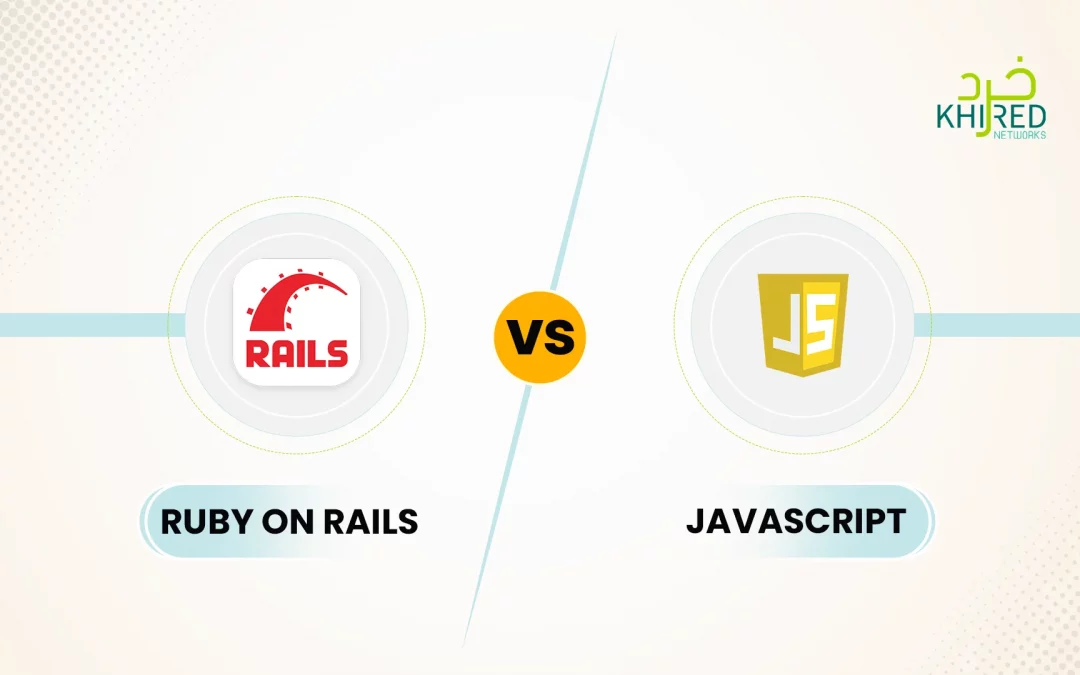In the rapidly evolving world of software, the number of mobile and web applications is continuously increasing. Advances in technology have boosted the use of tech tools for this purpose. And who wouldn’t want such solutions? After all, technology is now rooted in our lifestyle. But the question is, what is the contributing factor in the development of these apps?
Emerging and existing development frameworks are credited with fast app development. Ruby on Rails and JavaScript are two of several tools used for this purpose. Both are significant in building applications and software. This article unpacks the pros and cons of each toolkit, helping beginners choose the construction of their products.
Ruby on Rails (RoR)
Often shortened to Rails, RoR is an open-source framework based on the programming language Ruby. It’s a full stack development framework, but normally better supports the building of server-side logic of web applications, or to simply say the back-end development.
RoR uses the Model-View-Control (MVC) framework, an architecture common to several developmental toolkits. This structure offers a built-in setup for web services, web pages, databases, etc.
Benefits of ROR
The following are Ruby on Rails’s key features, contributing to its utility in the world of software development:
- Speedy Development: The Rails framework is known for its efficiency in app development, potentially speeding up the process by 25-40%. This feature makes it the preferred framework for startups seeking a quick launch of their SaaS product.
- Adherence to Standards: The RoR complies with the software paradigms, such as Convention over Configuration and Don’t Repeat Yourself. This means the framework adheres to the coding conventions, increasing productivity and streamlining development.
- Tools & Libraries: RoR offers a set of features and tools, providing a complete library for its users. The toolkit embodies the standard structure for web application development, ensuring greater flexibility and ease of feature exploration.
- Agile Framework: This framework exhibits good agility, allowing developers to adapt and customize applications to various needs using the wide range of features and libraries it offers.
- Active Community: As an easy-to-access framework, RoR boasts a wide community of developers who continuously use the toolkit’s various gems (reusable packages and libraries) for smoother functionalities.
Drawbacks
As nothing is perfect, so isn’t the RoR. So, let’s now explore the different drawbacks of this framework:
- Lack of Flexibility: RoR is an opinionated framework, performing some functions by suggesting the best practices. It might be useful at certain times, but not when the developer has something unique in mind to add to the app construction process.
- Slow ‘Run-Time’ Speed: Despite being known for quick MVP development, RoR infamously exhibits a slow run-time speed. The loading time during the developmental processes is long, reducing its efficiency.
- Improper Documentation: RoR’s gems are improperly documented. This makes it difficult for developers to find the right library and gem, and they might have to dive deeper into the code itself.
JavaScript
JavaScript is a versatile enterprise programming language that creates dynamic and interactive web pages. It enables developers to incorporate features such as animations, form validations, pop-ups, and real-time updates.
JavaScript is a widely used language that operates in web browsers. It enhances the user experience alongside HTML and CSS. Through libraries and frameworks like React and Node.js, it supports both front-end and back-end development. As such, JavaScript is essential for modern web development and application building.
JavaScript Benefits
Here’s a brief overview of the key benefits of this programming language:
- High Performance: As an interpreted language, JavaScript speeds up the execution of coded instructions, enhancing performance in client-server scripting.
- Less Complex: Compared to other languages, this one has a comparatively simple structure, which makes it easier to comprehend.
- Rich Interface Design: JavaScript’s interface is highly dynamic, allowing for the development of visually appealing and highly interactive interfaces.
- Minimal Overhead: This programming language has fewer code requirements and provides built-in functionalities for easily handling DOM (Document Object Model) access.
- Extended Development Support: The language supports the platform’s functionality with several add-ons that aid in programming using JavaScript.
- Popularity & Versatility: JavaScript enjoys a good market reputation and is a widely used language for both client-side and server-side development.
Drawbacks
Now, let’s move on to exploring the drawbacks of this versatile programming language:
- Less Secure: Security concerns are one of JavaScript’s major drawbacks. It is more prone to data breaches, and front-end development is especially vulnerable to client-side attacks.
- Complex Debugging: Due to the lack of practical debugging options in JavaScript, developers find it challenging to identify and fix errors.
- Browser Support: This programming language exhibits varying levels of support across different browsers. This inconsistency can often impact the application’s overall user experience.
Ruby on Rails vs JavaScript: A Quick Comparison
The following is a quick comparison of the two developer tools to help you with smart decision-making:
- Performance: Speaking of the performance during development, JavaScript takes the lead over RoR.
- Development Cost: Both toolkits have high web app development costs, considering the minor details that need to be addressed.
- Accessibility: Due to complex documentation, the coding language offers less accessibility compared to the Rails framework.
- Security: The built-in security features in Rails offer better protection to the developed app.
- Popularity & Community: AS a more widely used tool. JavaScript boasts a stronger community and more popularity compared to Rails.
| Ruby on Rails | JavaScript | |
| Performance | Slow | Fast |
| Development Time | Fast | Slow |
| Scalability | Complex | Simple |
| Community | Large | Enormous |
| Security | High | Medium |
| Popularity | Medium | High |
| Documentation | Extensive | More extensive but complex |
Final Words
In the world of web development, beginners can benefit from both Ruby on Rails and JavaScript in unique ways. With its convention over configuration approach, Rails simplifies backend development, while the latter is a versatile, full-stack language and is essential for front-end interactivity; also widely used with frameworks like React and Node.js.
This article lists the pros and cons of each with a quick comparison between the two, helping beginners in the field to choose wisely and smartly for their mobile app development.



